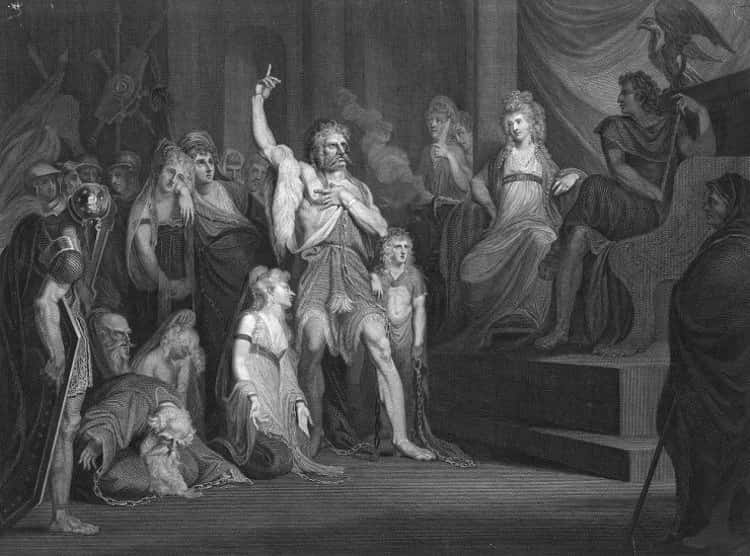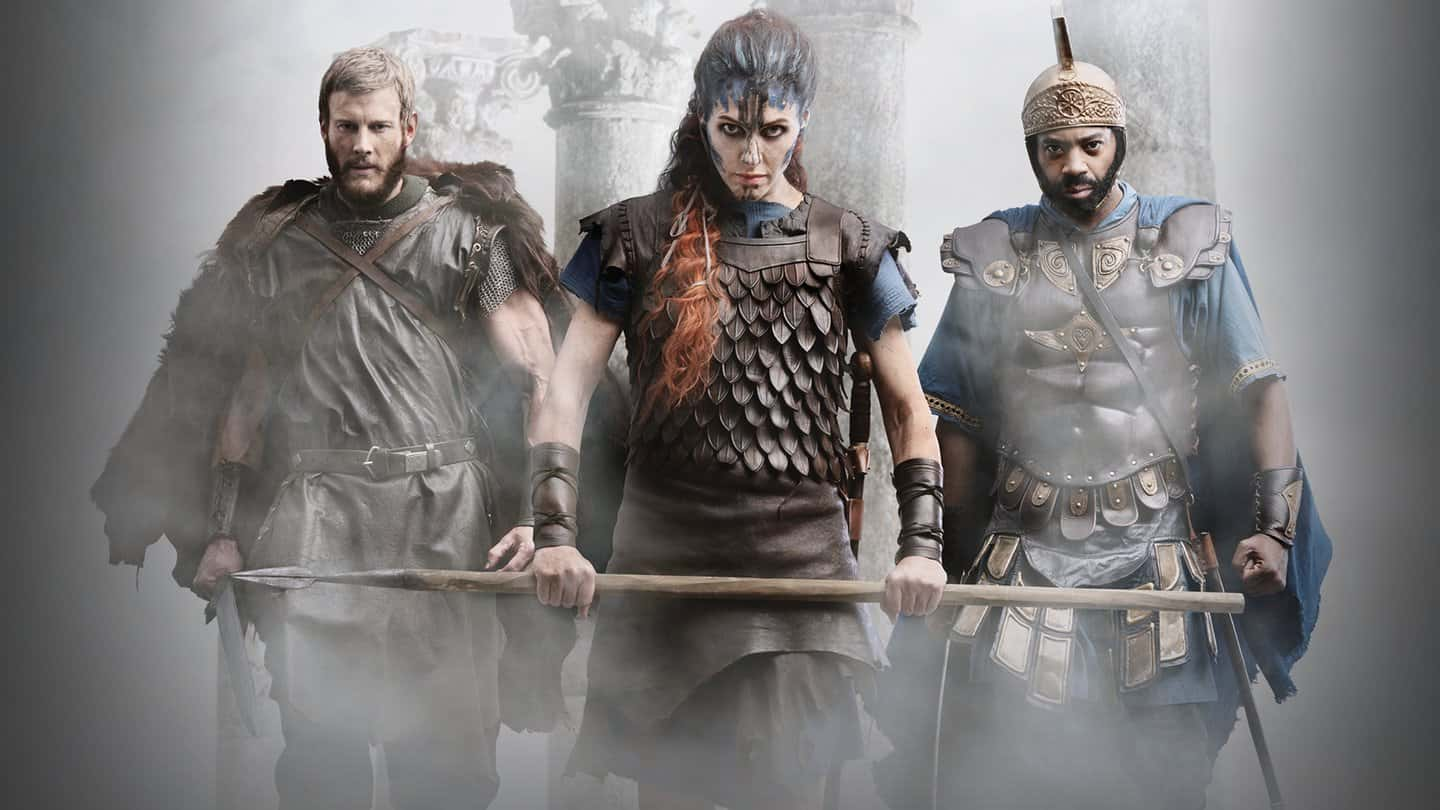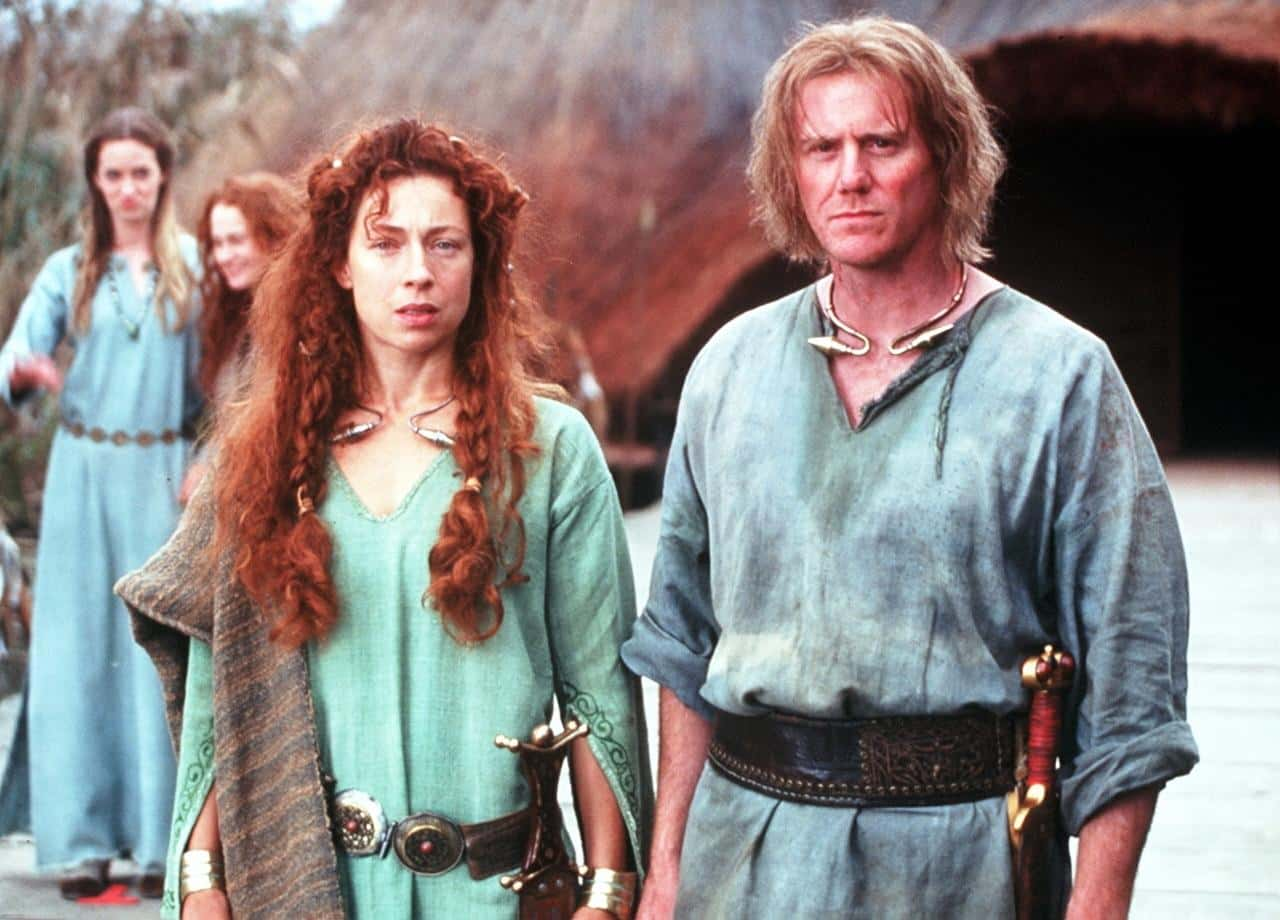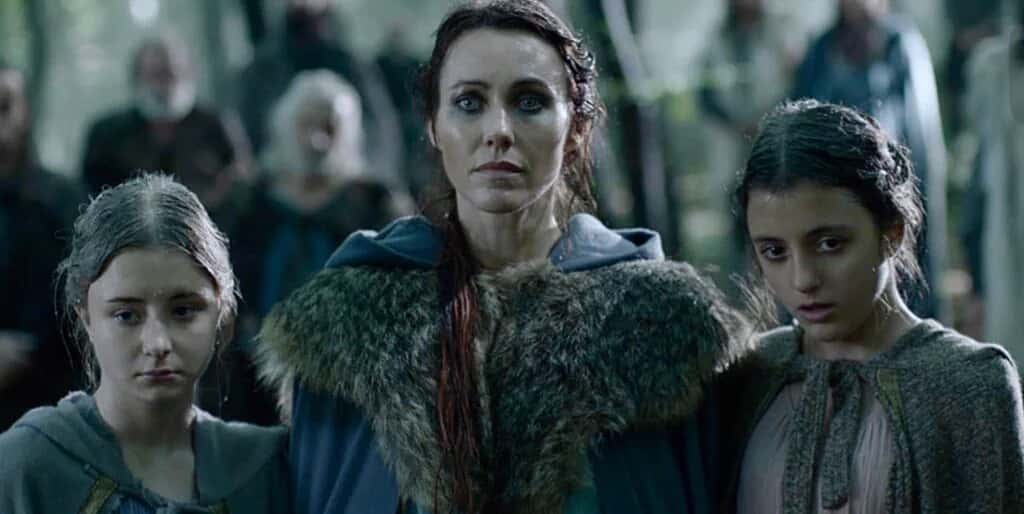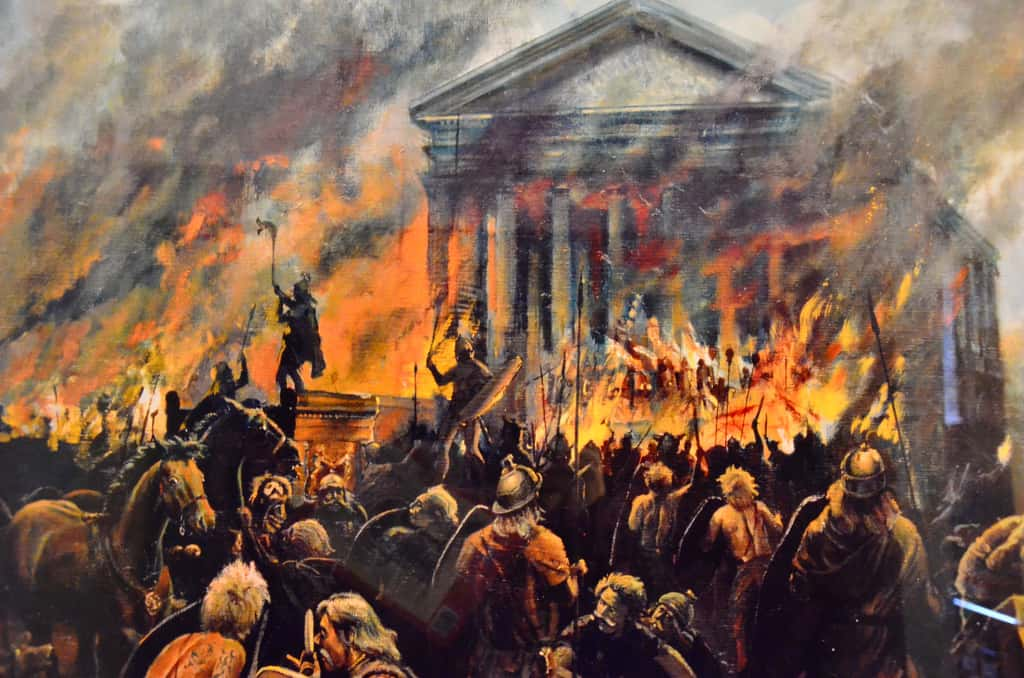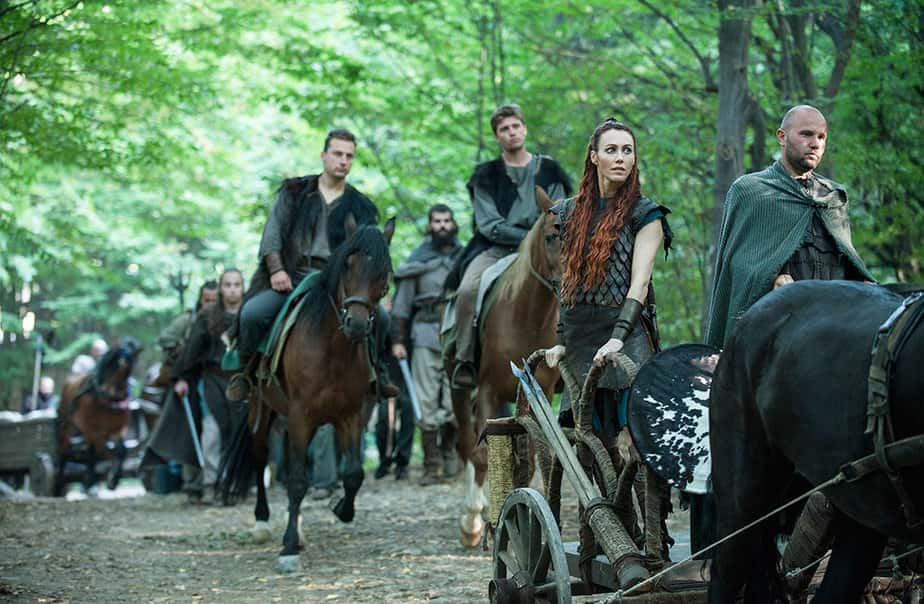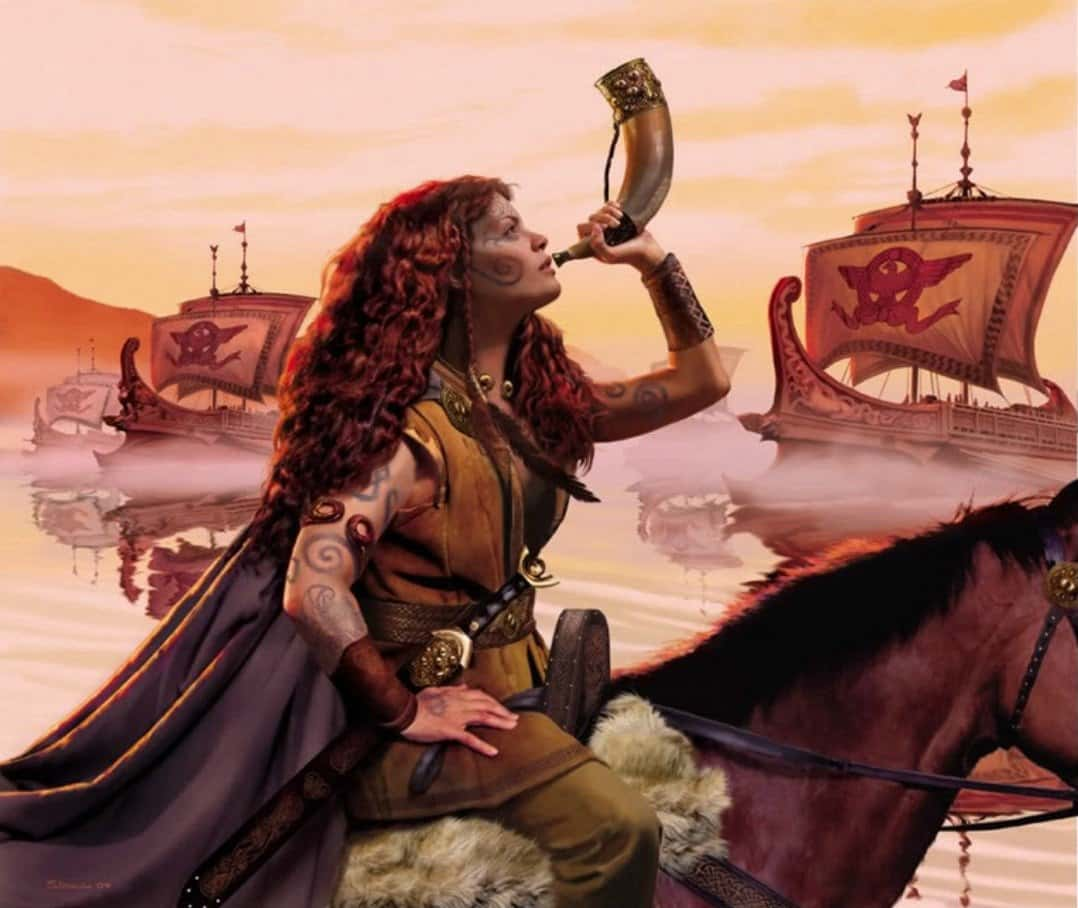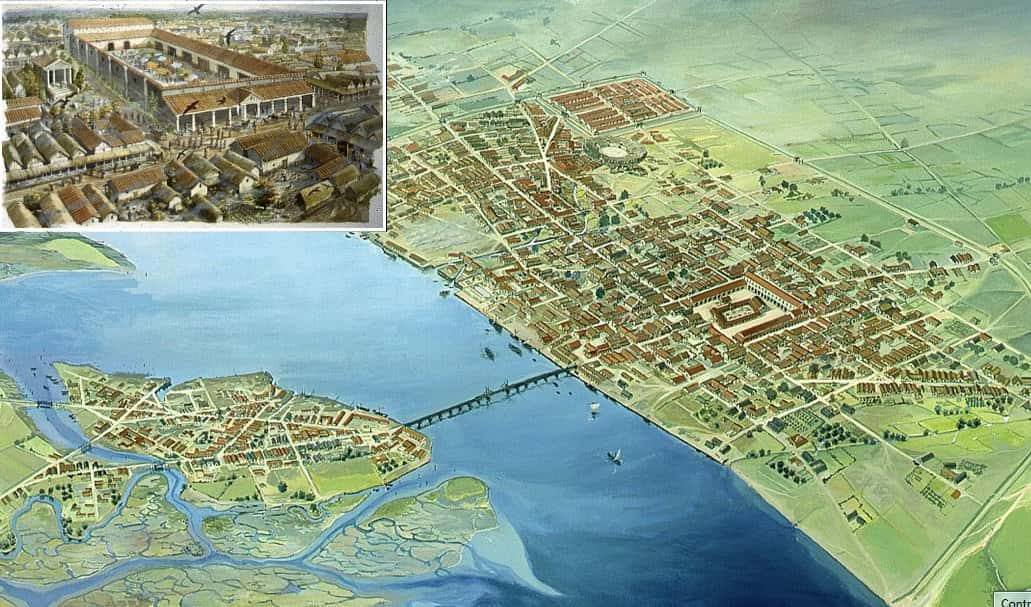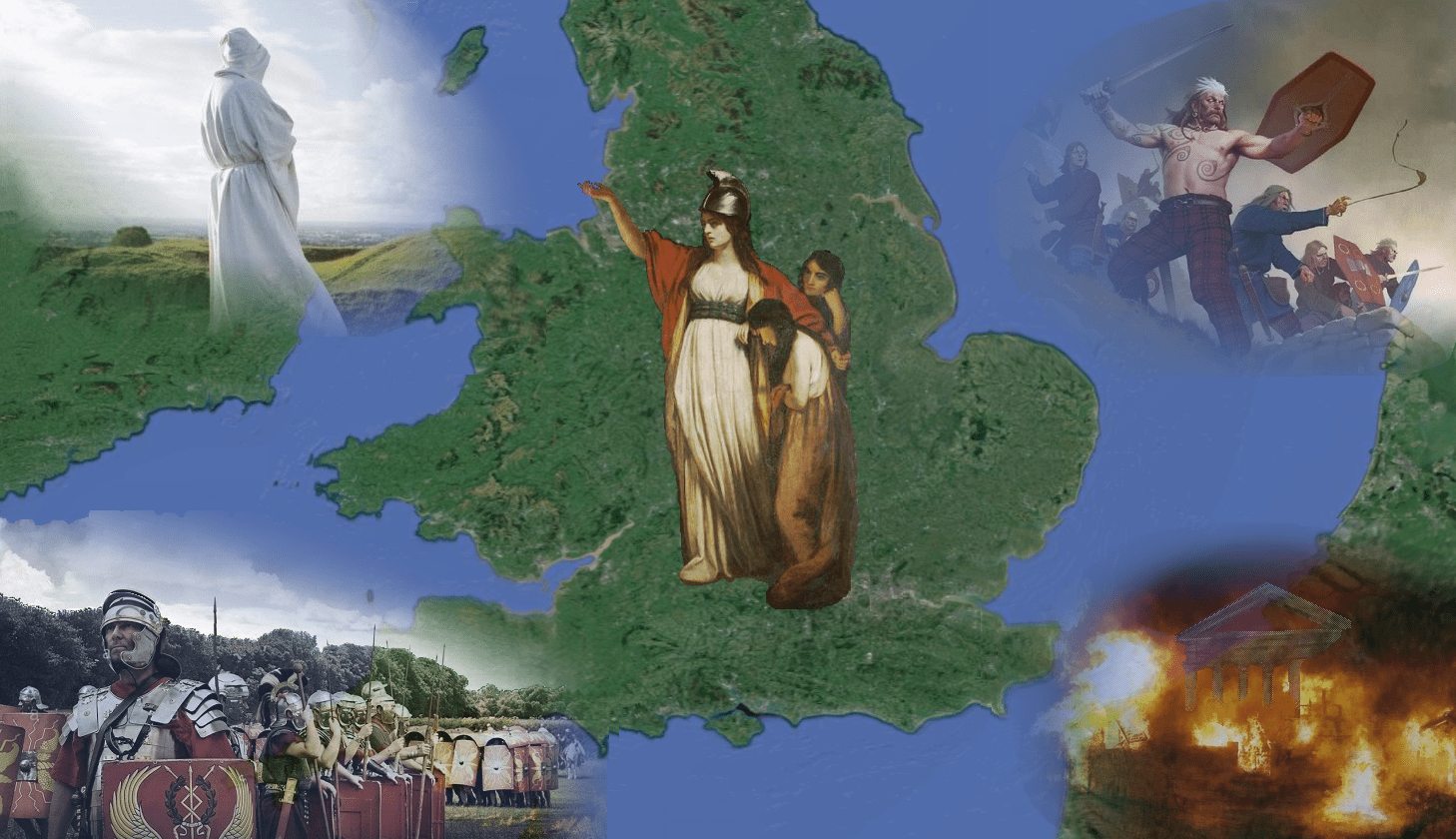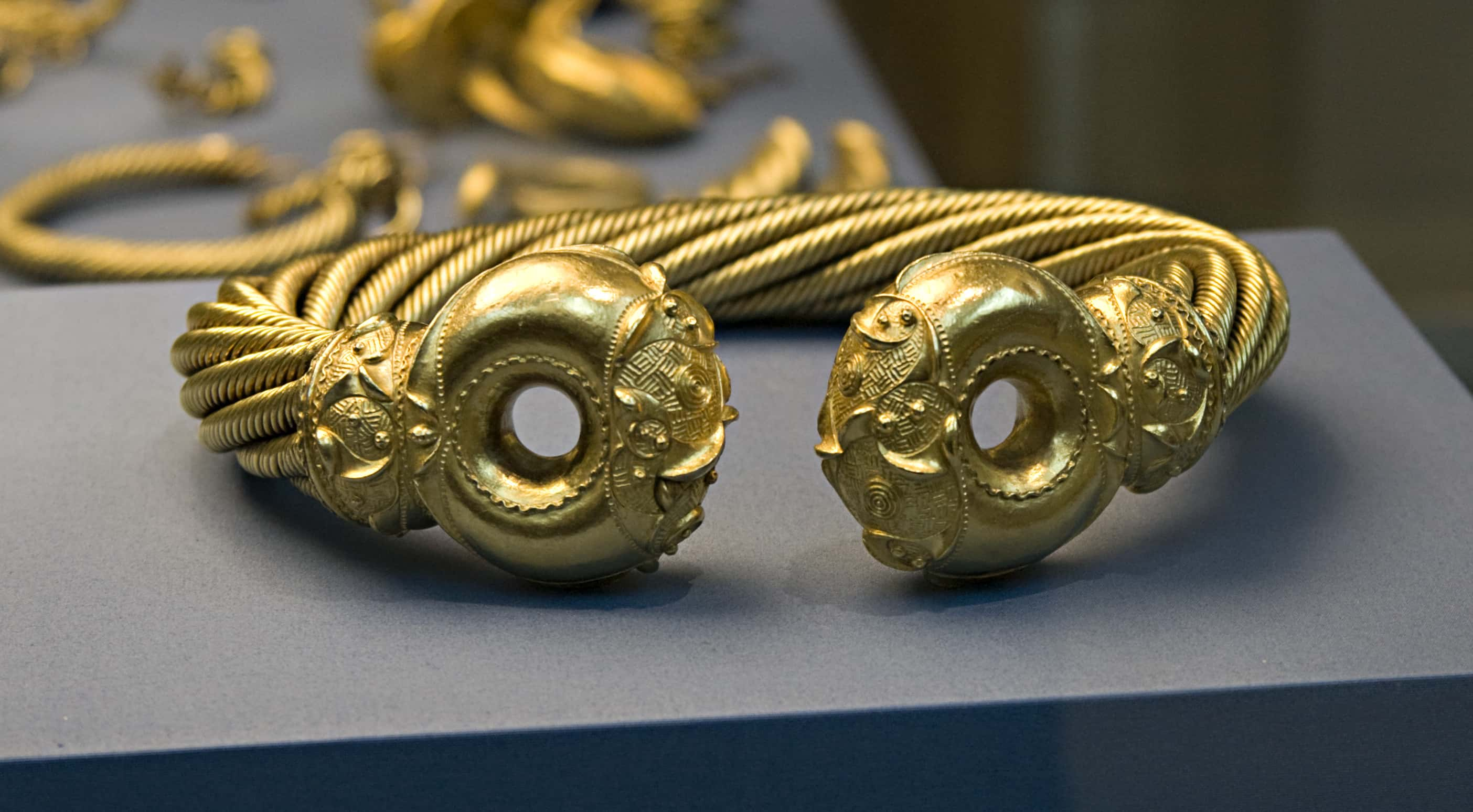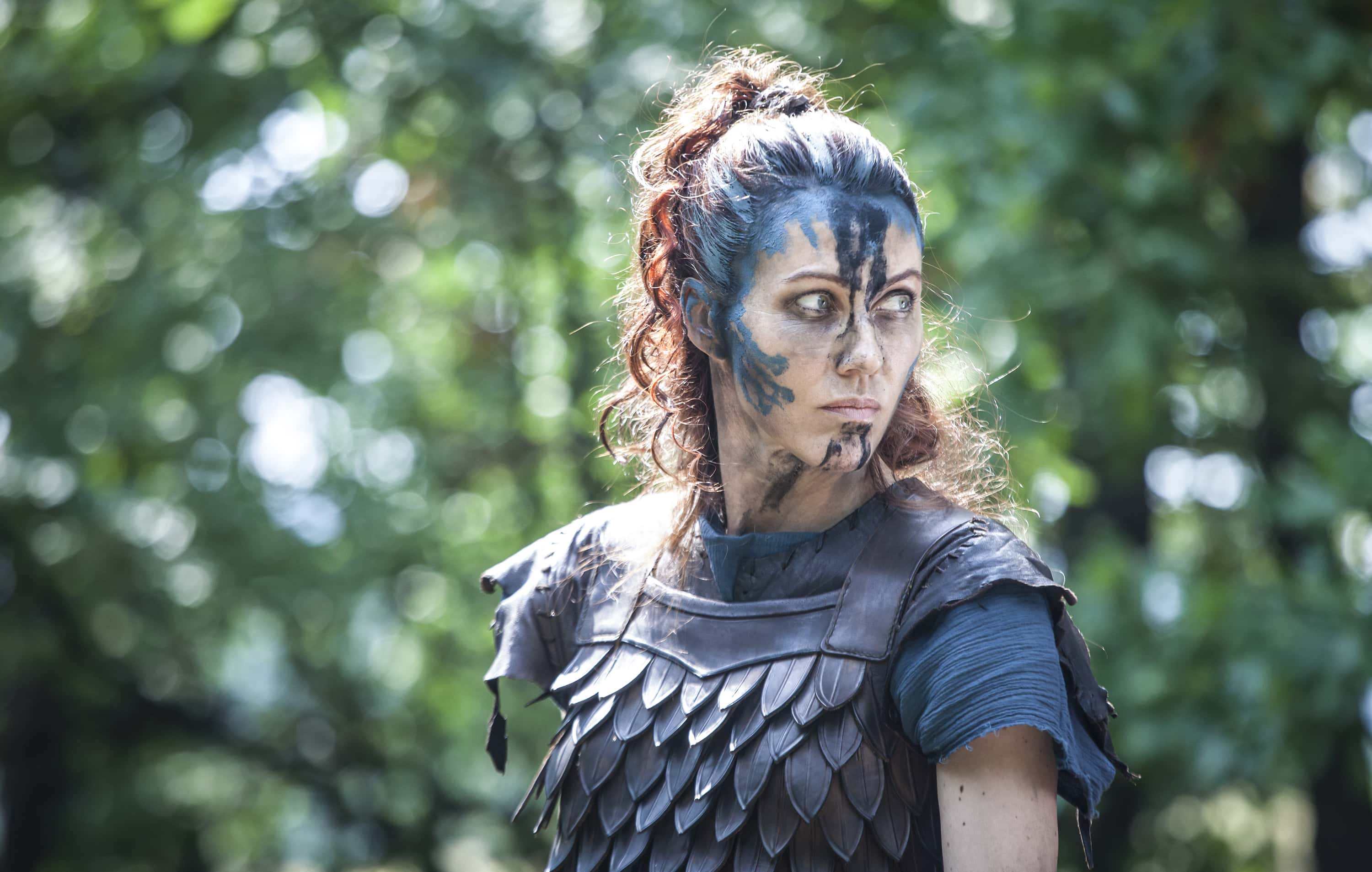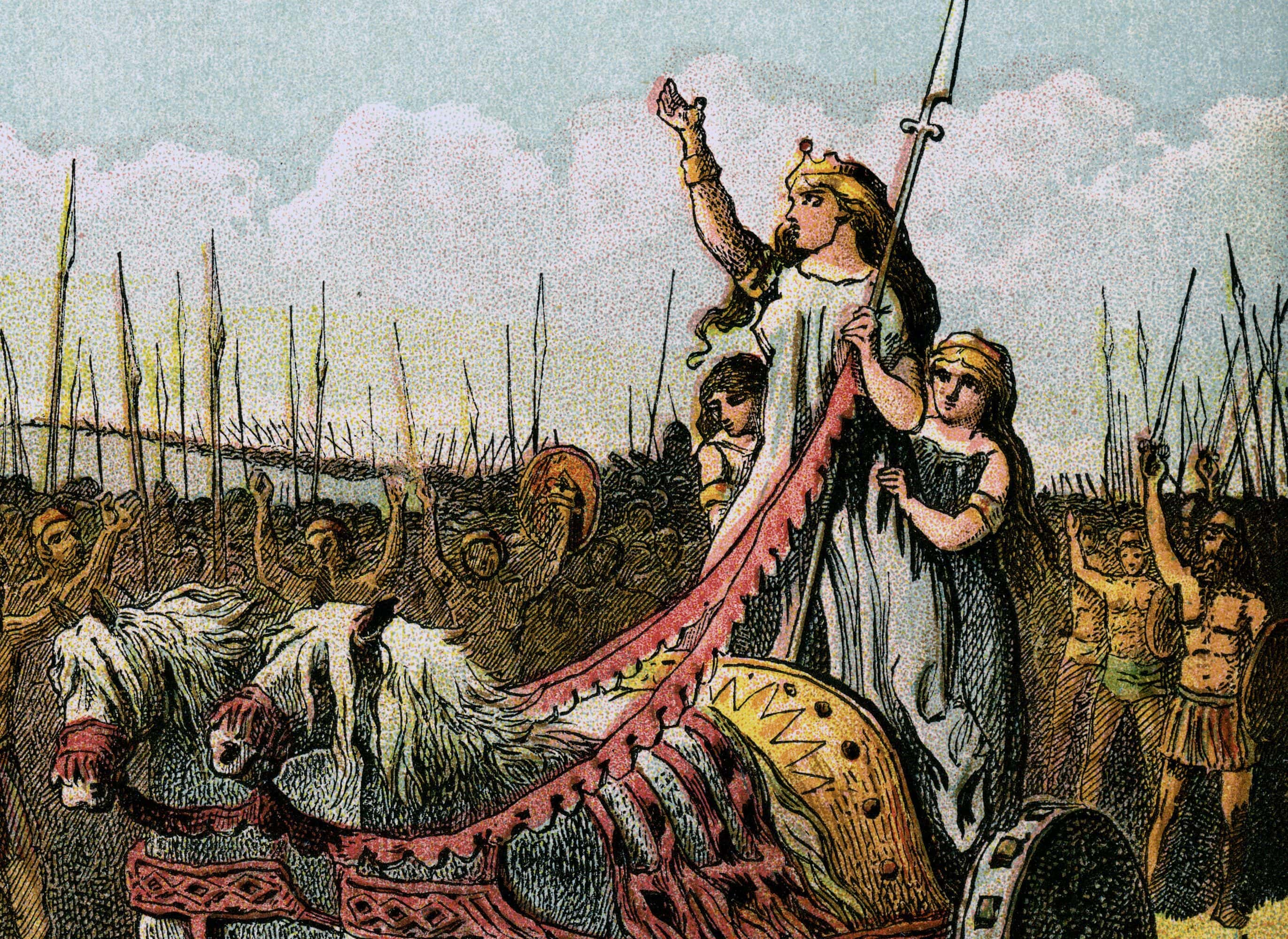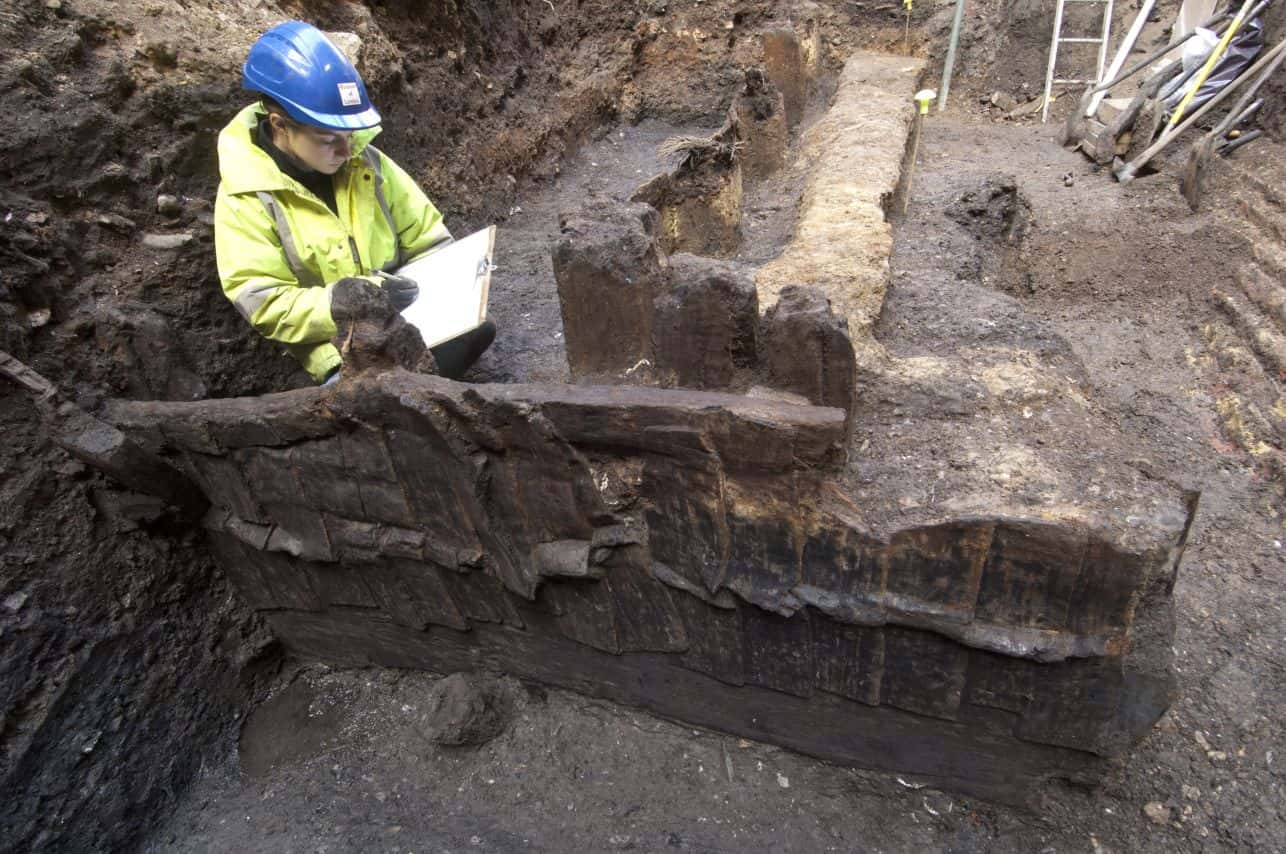"It is not as a woman descended from noble ancestry, but as one of the people that I am avenging lost freedom, my scourged body, the outraged chastity of my daughters… This is a woman's resolve; as for men, they may live and be slaves."—Boudicca
Boudicca was a Celtic queen of the Iceni tribe (from Norfolk and north-west Suffolk in modern-day England) who led an uprising against the occupying Roman Empire around 60/61 AD when their lands were taken by the Romans and they were no longer treated as allies.
She was eventually defeated in the Battle of Watling Street, but not before causing catastrophic damage to the towns of Camulodunum (Colchester today), Verulamium (St Albans) and Londinium (take a guess). An inspiration to the British for millennia, Boudicca is still remembered as an ideal image of the warrior queen. Read on for 42 heroic facts about this defiant thorn-in-the-side of one of the most powerful empires in history.
42. Victory
Boudicca is an ancient Celtic name which is derived from the word “boud,” meaning victory. Little is known about her prior to her marriage to Prasutagus, king of the Iceni tribe, but maybe her parents had a premonition of what her life was to hold!
41. How About an Alliance?
Around 43 CE, the Roman Emperor Claudius started conquering Britain, and the Iceni people, who until this point had been left alone, saw the writing on the wall and knew it would only be a matter of time before the Romans invaded their lands. In exchange for the Romans agreeing not to completely conquer the Iceni, they agreed to support Rome, which basically was a cheap way for Rome to control a territory without going to the trouble and expense of ruling it themselves.
40. She’s Kind of Scary!
Based on descriptions of Boudicca by ancient historians, she was a pretty terrifying figure. She was described as being of above average height, having a “piercing gaze,” waist-length fire-red hair, a harsh voice, and possessing a “greater intelligence than often belongs to women” (OK, not the greatest compliment, but from an ancient historian, that was about as good as it gets for a woman). In other words, you wouldn’t want to mess with her!
39. Rule This for Us- Will You?
Following the brief Iceni uprising against Rome, the Romans allowed Prasutagus to rule as a Client King or Proxy Ruler of the Iceni People. While he did have a certain amount of independence as King, Rome fully expected to take over completely when he died. It was kind of an "I'll keep your seat warm for you" situation.
38. Don’t Take Our Weapons!
Though relations between Rome and the Iceni people were peaceful at first things started to go south in 47 AD when Ostorius Scapula, a Roman Governor and general, got the idea to forbid the Iceni and other Briton tribes south and east of the Trent and Severn rivers to carry weapons unless they were hunting or as protection while traveling. Understandably, the Iceni weren’t exactly happy with this idea, and this led to a brief rebellion against the Romans.
37. Last Will and Testament
Boudicca bore her husband Prasutagus two daughters but no sons, so when he died, he had no male heirs. He attempted to play politics and win protection for his family by willing half of his wealth to his daughters and the other half to Emperor Nero, but this backfired in a major way and ended up resulting in the seizure of his kingdom and his family’s humiliation. Definitely not what he had in mind!
36. Using Her Smarts
According to some historians, the main reason that Boudicca was able to accomplish as much as she did was her keen intelligence. I’m sure that this wasn’t the only reason, but could an idiot have rallied and led an army well enough to level three Roman cities and kill 80,000 Romans? Probably not!
35. Ideally Located
One of the things that made the Iceni territory so attractive was its location. While the empire bordered the western part of the territory, the northern and eastern boundaries were bordered by water and the rest of the area was covered in thick forest. This made invasion from other foreign nations nearly impossible, which would have made it a strategic territory for the Romans.
34. Outsider
Little is known about Boudicca before her marriage to Prasutagus, but it is believed that she was born around 30 AD in Camulodunum (now Colchester) and belonged to a prominent family or was descended from royalty. It is also believed that she was not Iceni herself, but marrying outsiders was pretty common with the ruling class, so that didn’t really matter in the end.
33. Women Rule!
Boudicca’s legend was seen by the Romans as a cautionary tale for what happens when women are allowed to rule, but two British queens took a different view of the story. In the 16th century, Queen Elizabeth I used it to solidify her own rule and to demonstrate that a strong British Queen fighting a foreign power wasn’t without precedence. In the 19th century, Queen Victoria saw herself as her namesake, and also used the story as proof of her own right to hold power.

32. Lesson Learned
When Boudicca launched her rebellion, the Romans were basically caught completely unaware, but nobody can say they didn’t take anything away from it. They swore that they’d never allow anything like Boudicca’s massacre to happen again, and after her defeat, they took steps to strengthen their settlements and protect themselves against any possible future uprisings. Fool me once, right?
31. It Was Her Right
At the onset of World War II, British Prime Minister Winston Churchill used Boudicca as a rallying cry to Londoners, and they saw her as a symbol of resistance and strength. In his book History of the English-Speaking Peoples, Churchill also stated that “it is the primary right of men to die and kill for the land they live in, and to punish with exceptional severity all members of their own race who have warmed their hands at the invader's earth,” which is likely no less than what he would have done in her stead.
30. Fate Worse than Death
Nobody knows exactly what happened to Boudicca and her daughters after Boudicca’s defeat, but historians generally agree that however they died, it was better than what would have happened if they’d been captured by the Romans. First, they would have been marched through the streets in a Roman victory parade, and then they would have been tortured and had their bodies displayed for the crowds. Death definitely sounds preferable to that kind of humiliation.
 youtube
youtube
29. Tribes Unite!
Boudicca didn’t waste any time planning her revolution. It just so happened that the Iceni weren’t the only Briton tribe who had a beef with the Romans. The Trinovanti, Cornovii, Durotiges, to name a few, were also unhappy over the heavy taxes, religious suppression, and theft of their lands, so they were more than happy to rise up against the empire. By the time she was done, Boudicca had managed to raise about 100,000 men for the fight, and her allies selected her to lead them.
28. Slanted View
Since the Celts didn’t have written records, much of what’s known about Boudicca’s rebellion comes from Roman historians Tacitus and Cassius Dio. Tacitus got his information from his father-in-law, who was a military tribunal and served in Britain during that time. Dio, on the other hand, was born about 100 years after Boudicca’s rebellion, so he would have had even less direct knowledge of her than Tacitus. The two biographies differ in a number of aspects, but one thing they could agree on was that she was a cunning and powerful woman.

27. More Than a Queen
According to Cassius Dio, Boudicca was more than just a queen. He claimed that she was also a priestess to the goddess of victory Andraste, and possibly the goddess incarnate, which would have made the assaults and floggings especially heinous to the Iceni people.
26. Contrasting Queens
Around the same time that Boudicca ruled the Iceni, a lesser-known queen named Cartimandua led the Brigantes tribe. Unlike Boudicca, she took a friendlier view of the Romans and managed to rule her people for 25 years without getting involved in Boudicca’s rebellion.
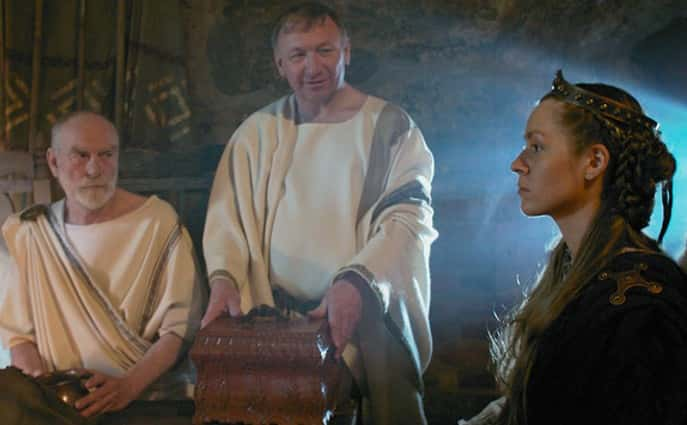 ageod-forum
ageod-forum
25. Boudicca’s Last Stand
The exact site of Boudicca’s final battle—The Battle of Watling Street—is mostly based on speculation, but if the legends are true, her final stand was at Battle Bridge Road in Kings Cross, London. As with much of the story surrounding Boudicca, there’s little proof to this effect, but the discovery of Roman remains and its proximity to the Roman settlement of Londinium make a pretty good case that this is where she ended up.
24. Seriously Outnumbered
After her victory at Camulodunum, Boudicca went on to destroy the cities of Londinium (London) and Verulamium (St. Albans) in decisive fashion. Neither of the cities had enough people to defend them, and it didn’t take much for Boudicca’s troops to be victorious. Altogether they killed about 80,000 Roman soldiers and civilians in the three battles.
23. Variations on a Name
Boudicca’s name has gone through several variations over the years. She’s been called Voadicia by the English chronicler Raphael Holinshed, Bunduca in the 1612 Jacobian play Bunduca by Beaumont/Fletcher, Boadicea in William Cowper’s poem of the same name, and Boudicca in the manuscripts of Tacitus. The variances were likely due to the development of Welsh and Irish, but Kenneth Jackson, a professor of Celtic languages, thinks they’re all wrong and that the correct spelling should have been Boudicca.
 Epic Rap Battles of History Wiki
Epic Rap Battles of History Wiki
22. Uncharacteristic Ornament
Celtic warrior chieftains of the time wore a piece of jewelry known as torque (torc) around their necks. The necklace was a metal band made most often with twisted strands of gold and decorative knobs at the throat. The necklace wouldn’t have typically been worn by a woman, but if Dio’s description of Boudicca is accurate and she did wear one, it was a pretty major statement of her power.
21. Sending a Message
In his accounting of the battle of Londinium, Dio describes a brutal scene that would have definitely raised a few eyebrows. Boudicca supposedly hung up the noble women like animals, and did horrible things to their bodies. When they were done with this crude scene, they supposedly skewered them like meat on a stick.
20. Them’s Fighting Words!
Before leading her troops to battle, Boudicca reportedly gave a rousing speech worthy of Braveheart. She said: “I’m not fighting for my kingdom and wealth. I am fighting as an ordinary person for my lost freedom... Consider how many of you are fighting—and why. Then you will win this battle, or perish. That is what I, a woman, plan to do! Let the men live in slavery if they will."
19. Chicken or Egg?
How Boudicca died still remains something of a mystery. According to Tacitus, she swallowed poison when she realized that she had no chance of winning the final battle, but Dio suggested that she was sick. On the other hand, it has also been suggested that if she was sick, it could have been from the poison, so it kind of brings everything full circle.
18. Warrior Goddess
Andraste was a Celtic warrior goddess whose name is believed to mean "invincible" in the Celtic languages. She was worshiped by the ancient Britons and particularly by the Iceni people. She was the goddess of battles, ravens and, most importantly, victory. Warriors would summon her on the eve of a battle asking for her strength and guidance. Every little bit helps, right?
17. Invoking the Goddess
Killing hares was a big no-no in ancient Britain, as it was believed that the hunter might turn chicken in doing so. Boudicca was said to have invoked the spirit of Andraste by releasing a hare from the folds of her skirt before battle. She may have been hoping that the Romans would kill the hare and be struck with a bout of cowardice, but unfortunately for the Celts, they didn’t get their wish and they were defeated.
16. Check!
One of Boudicca’s strategies for battle was to take what she presumed would be abandoned Roman food stores for supplies, but the Roman general Suetonius anticipated her move and burned them all first, leaving her army to starve.
15. Fresh Tactics
Suetonius did not like losing to what he perceived to be “barbarian rebels,” and especially not to a woman. With the Romans seriously outnumbered, it might seem like the Brits were assured victory, but other than numbers, the Romans had all the advantages. They were better trained, more experienced, had better weapons, and in the end, at least 80,000 rebels were killed by Roman hands.
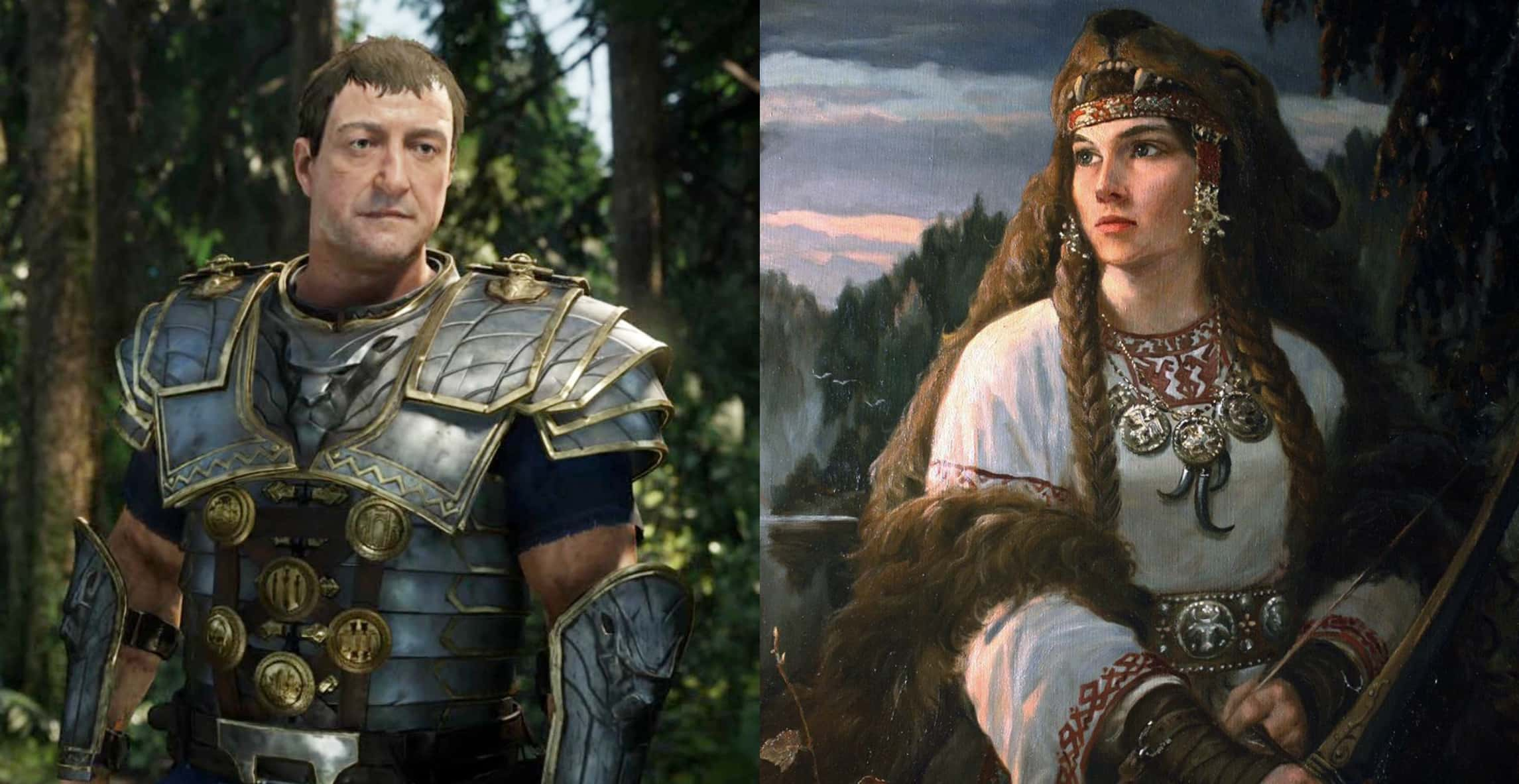
14. Hindered Not Helped
It was a Celtic custom for soldiers to bring their families with them to their battles, but in the case of Boudicca and her rebels, this proved to be a huge mistake, and it ended up totally backfiring on them. Instead of witnessing the glorious defeat of their enemy, all the families' wagons blocked the soldiers' exit, and all were killed in the slaughter.
13. Lifestyle Choice
For about 500 years before the Romans showed up, Britain was inhabited by several individual warring tribes with their own distinctive identities and royal customs, whom the Romans broadly labeled Celts. The Romans painted the Celts as barbarians, but in truth, they were warriors, and fighting for land, glory and riches was literally part of their fabric.
12. Where in Britain is Queen Boudicca?
If you believe the rumors, Queen Boudicca’s remains could be buried between platforms nine & ten at King’s Cross station in London (I wonder if Harry Potter saw her ghost?), or she might be underneath a McDonald's in Kings Norton, Birmingham. Either way, no trace of her has ever been found, and while Dio claims she had a lavish burial, that would have been highly unlikely if she died in battle. The lack of details hasn’t stopped archaeologists from looking for her however, so maybe one day she’ll turn up.
11. Boudicca’s Destruction Horizon
One of the few pieces of evidence that Boudicca was more than a myth is an archaeological layer of burnt red clay beneath the city of Colchester known as Boudicca’s Destruction Horizon. The layer was also filled with burnt pottery and other artifacts from the period, further demonstrating just how thorough Boudicca was in her destruction.
10. Monumental Tribute
From 1856 until his death in 1885, the sculpture Thomas Thornycroft crafted the work that would become his crowning glory—a statue of Boudicca and her daughters. The statue portrayed the warrior queen riding on a scythed chariot with her daughters on either side and pulled by two horses standing on their hind legs.
9. Boudicca in Bronze
Although Thornycraft was able to complete the full-size model of the statue before his death, there was a teeny little hitch—no money was available to cast it in bronze, and there was no place to erect it. In 1898, the money was raised to cast it, but it wasn’t until 1902 that it found a permanent site at Westminster Pier in London. Prince Albert originally commissioned the statue and lent his horses as models, but he died never getting to see it finished.

8. We Meant Loan-Not Grant.
One of the big points of contention that the Iceni had with the Romans was over some sketchy financial dealings on the part of the latter. When Boudicca’s husband was king, he made an agreement with Emperor Claudius that was drawn up as a grant, and as the name suggests, grants were money given, not lent. Procurator Catus Decianus decided to change the terms and demanded that the loan be repaid. The Romans also decided to help themselves to the estates of other wealthy Iceni, and lower members of the royal family were sold into Roman slavery. That’s not how you keep the peace!
7. Blue-Man Group
Celtic warriors were described as being tall and muscular, and at least a head above their Roman enemies. This alone would have made them look pretty imposing, but they also loved grandstanding, and would often paint themselves with a blue die to look even more scary. The showboating didn’t stop the Romans, but you’ve got to give them points for style!
6. Poetic Roots
In Celtic culture, Druids were revered and held positions as doctors, lawyers, alchemists, poets and more. Some historians believe that Queen Boudicca was descended from a druid, and that her mother was a baduri—one of the Irish names for female druids meaning "female poet." It’s possible that Boudicca was also a druid, but there’s no consensus on this one so it’s impossible to say for sure.
5. Ode to the Queen
Somewhere around 1782, the English poet William Cowper wrote an ode to the warrior queen and added some color to the story. The poem, titled Boadicea, described the queen visiting a druid who predicted that her descendants would “eclipse” the Roman Empire. Though she is defeated in battle, she dies cursing the Romans, threatening that “Shame and ruin wait for you!”

4. Score One for the Britons
Around 60 or 61 AD, Boudicca led her people to their first victory in Camulodunum, the former Trinovantian capital which was now a settlement for Roman veterans. According to Tacitus’ history, the city was poorly defended, and Rome didn’t send enough auxiliary soldiers. Within two days, the city was burned, and a few thousand Romans were slaughtered or burned alive.
 Blog del profesor Julio Dapena Losada
Blog del profesor Julio Dapena Losada
3. Taking Control
After the death of Boudicca’s husband Prasutagus, the Romans showed up to take control of their lands, and according to some historians, the army was ordered to “bring the territory to its knees.” While the exact reason for the extreme action isn’t known, it’s believed that they either wanted to quash future rebellions by the Celtic tribes, or that they were seizing it as repayment for unpaid debts on the part of the king.
2. Women’s Rights
Celtic Law in Boudicca’s time was surprisingly forward thinking when it came to women’s rights. Women could rule, they could participate in politics, religion and the arts, and had control of who they married and the right to divorce under certain circumstances like ill-treatment. In the case of harassment, a woman had the right to take vengeance herself. While there were no specific guidelines for what her revenge might look like, there are stories of Celtic queens having heads cut off and poisoning the offender.
1. Brutal Humiliation
The Romans didn’t give a wit about Celtic law, and according to their laws, Boudicca and her daughters had no rights to any of Prasutagus’ wealth or kingdom, and the Romans certainly weren’t going to jointly own anything with a woman. As if it wasn’t enough that they immediately pillaged his house after his death, they allegedly whipped Boudicca and hurt her two adolescent daughters. No wonder she wanted revenge!
Sources: 1, 2, 3, 4, 5, 6, 7, 8, 9, 10, 11, 12, 13, 14, 15, 16, 17, 18, 19, 20, 21, 22, 23



